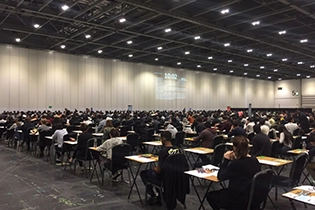
撰写研究结论是学术写作中至关重要的一环。一个精心设计的结论章节不仅总结研究成果,还展示了研究的深度和广度。本文将介绍撰写高效结论的七步框架,旨在帮助研究者更好地展示他们的工作成果。
1. 引言部分 (Introduction)
首先,明确告知读者结论章节的内容及其顺序。这有助于读者建立对文章结构的预期,从而更好地理解接下来的内容。
2. 概括关键发现 (Summarize Key Findings)
接下来,讨论与研究目标相关的主要发现。这一步骤是对整个研究的简洁而精准的总结。
3. 回答研究问题和实现研究目标 (Answer Research Questions and Address The Research Aims)
此部分重点解释研究发现如何帮助解决研究问题,而不仅仅是回答具体的研究问题。这涉及将研究发现放入更广泛的学术背景中,展示其对该领域的影响。
4. 阐述贡献 (Outline The Contributions)
说明你的研究对理论和实践方面的贡献 (Explain the contributions your study makes to theory and practice)。
列出研究成果 (List the research outputs)。
解释你的研究如何解决问题以及为什么重要 (Explain how your study solves the problem and why that matters)。
展示你的研究是如何填补现有研究中的空白的 (Explain how your study fills research gaps)。
讨论你的研究与现有理论的关系 (Discuss how your research relates to existing theory)。
探讨研究发现在现实世界中的应用 (Discuss how research findings can be applied in the real world)。
5. 讨论局限性 (Discuss Limitations)
批判性地反思研究的局限性及其潜在优点。这一步骤展示了研究者的自省能力和学术诚信。
6. 为未来研究提出建议 (Make Recommendations for Future Research)
在研究中提出新问题,并清晰地概述这些问题,以供未来的研究人员参考。说明其他研究人员如何可以在你的研究基础上进一步发展你所在领域的知识体系。
7. 结束总结 (Wrap Up Your Conclusion Chapter with a Brief Closing Summary)
最后,以一个简短的总结结束结论章节。这个简短的总结应作为读者的快速参考,非常简要地概述你在本章中讨论的内容。
范例 (Example)
结论章节示例 (Conclusion Chapter Example):
In conclusion, this study provided an in-depth analysis of the impacts of environmental policies on urban development. The key findings highlighted the significant role of sustainable practices in promoting urban regeneration. The research addressed the primary question by demonstrating how innovative policies can effectively balance environmental conservation with urban growth. The study contributes both to theoretical frameworks in urban planning and practical approaches for policymakers. The research outputs, including published papers and presentations, are a testament to the study's significance. Despite certain limitations like the geographical scope, this research paves the way for future studies to explore diverse urban contexts. Overall, this conclusion chapter encapsulates the essence of the research, offering a comprehensive summary for readers and a foundation for further scholarly exploration.
通过遵循这七步框架,研究者可以更有效地撰写结论章节,清晰展示他们的研究贡献,为学术界和实践领域提供宝贵的见解。




